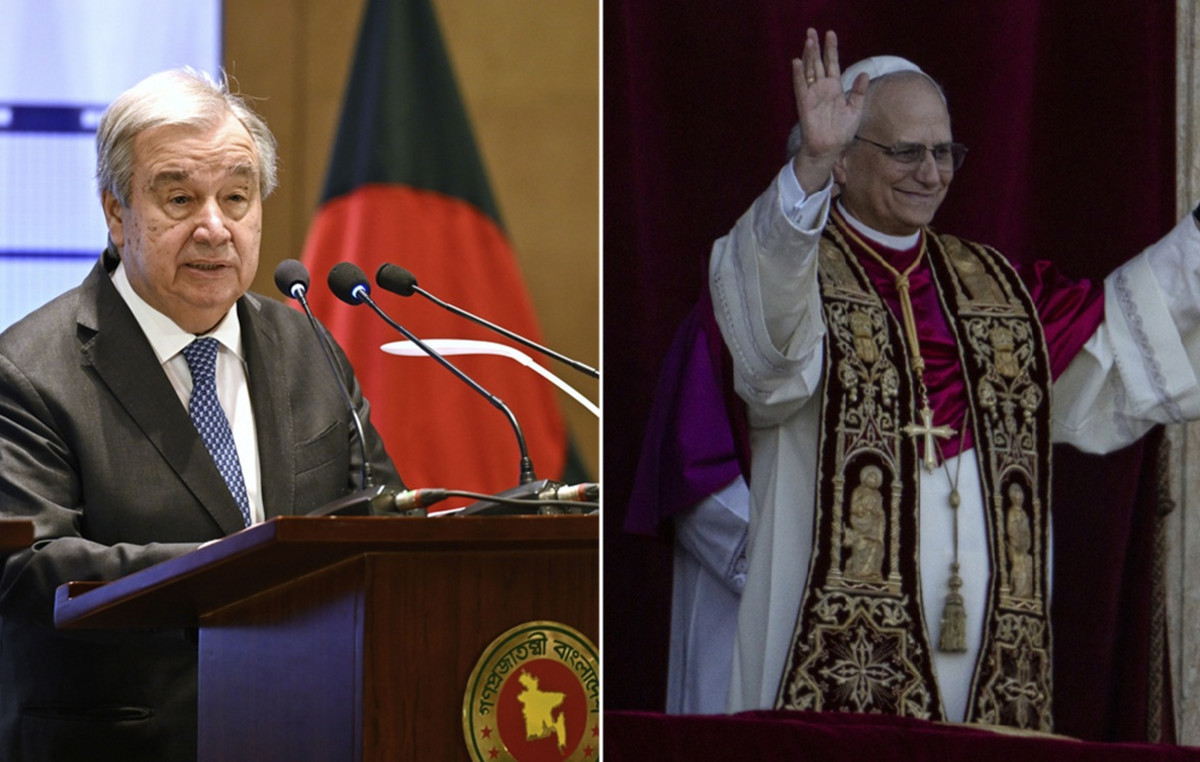The Russian advance on the ruins of the city of Avdiivka was only a matter of time. Ukrainian forces were heavily outnumbered and had come under daily attack since October – in a city that has been on the frontline since Russian-backed separatists launched a rebellion against Kiev in the spring of 2014.
The Russians have suffered enormous losses since the start of the war, with around 1,000 civilians remaining despite constant attempts by the Donetsk authorities to persuade them to leave.
In December, US officials estimated that the Russian military had suffered more than 13,000 casualties along the Avdiivka-Novopavlivka axis in just a few weeks.
The Russians began their attack on the city with heavy armor, but suffered heavy losses, in part due to Ukrainian drone action. More recently, they changed tactics, sending dozens of squads into the city.
The Ukrainian military acknowledged in December that the concentration of Russian forces would prevail. The then commander-in-chief of the Ukrainian armed forces, General Valery Zaluzhnyi, said that “the enemy has the ability to concentrate its forces, including artillery and aviation, in one direction or another. And they can mean that within two or three months the city [Avdiivka] suffer the same fate as Bakhmut”, which was taken last year.
On Friday (16), Maksym Zhoryn, deputy commander of the 3rd Ukrainian Brigade, said that his men were outnumbered and that the Russians sent seven brigades, totaling around 15 thousand men, into combat.
Ultimately, the enormous mass of Russian forces, coupled with their air superiority, left the city's defense untenable and threatened to encircle the Ukrainian brigades still defending it.
Ukraine's new commander-in-chief, General Oleksandr Syrskyi, ordered a withdrawal and, according to the Institute for the Study of War, “the continued Russian advance on Avdiivka suggests that Ukrainian forces are currently conducting a relatively controlled withdrawal from Avdiivka.” .

The Ukrainian withdrawal to defensive lines appears to have come at a cost, as Russian units mined some routes. And the institute warns that “Ukrainian forces may have to stabilize the front line by counterattacking in the area where Russian forces are trying to close the siege.”
There are already signs that not all Ukrainian units managed to escape. Oleksandr Tarnavskyi, commander of the Tavria group defending the area, said on Saturday (17) that the withdrawal was carried out in accordance with the plan that was developed “and yet, several Ukrainian soldiers were taken prisoner in the final phase of the operation, under pressure of the enemy’s superior forces.”
The Ukrainians hope that their withdrawal to more defensible and already prepared positions will impede Russian advances, as they “would likely suffer considerable losses if they decided to frontally attack these Ukrainian positions in open fields”, in the institute's opinion. Still, as Zhorin admitted, “the overall situation in this area is complicated and we face some very difficult battles ahead.”
There are other parts of the Donetsk and Kharkiv regions where Ukrainian forces are under pressure. The Russians have recently made gains around Mariinka, south of Avdiivka. They are inheriting terrain in what has become a horrific battle of attrition, but the Russian Defense Ministry can hail such operations as progress as presidential elections approach.
There are military parallels in Avdiivka with the loss of Bakhmut last year, when the Ukrainians clung to parts of the city to inflict as many casualties as possible on the Russian attacking units, despite suffering heavy losses themselves.

President Volodymr Zelensky told the Munich Security Conference on Saturday: “Since October they have been attacking this poor Avdiivka with all the armaments, with all the power they had, with thousands of their soldiers, who died, tens of thousands. This is what Russia achieved. It's a depletion of your army. And I think that this is the task that our soldiers perform every day and at the same time they save our lives”.
Zelensky stated that for every Ukrainian soldier lost in and around Avdiivka, seven Russians were killed.
He also repeated the argument that Russian airstrikes were carried out against Ukrainian defenders at will and called on Ukraine's allies to “unblock the skies.” On Friday, a commander in Avdiivka said his troops had been subjected to 60 airstrikes in the past 24 hours.
Ukraine's much bigger problem is that it is defending a 1,000-kilometer-long front line and a chronic shortage of artillery shells and other munitions as a $60 billion U.S. military aid package is held up. in Congress since December and Europe is struggling to deliver what it had promised.
Furthermore, Ukraine's best units have been fighting almost non-stop for two years, while Russia has mobilized an additional 300,000 troops to increase its numerical superiority.
The Ukrainians are quickly adapting to a new active defense posture that will continue to bleed Russian forces. But they can only win the battle here – and on the front lines – with a radical shift in technology and a new infusion of Western tools.
The arrival of F-16 fighter jets should at least tip the scales in the sky, but long-range missile systems to target Russia's rear are also an urgent need, and a need that many Western governments have been wary of providing.
Source: CNN Brasil
Bruce Belcher is a seasoned author with over 5 years of experience in world news. He writes for online news websites and provides in-depth analysis on the world stock market. Bruce is known for his insightful perspectives and commitment to keeping the public informed.







